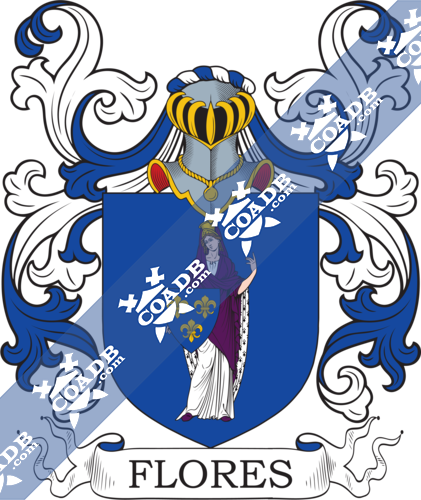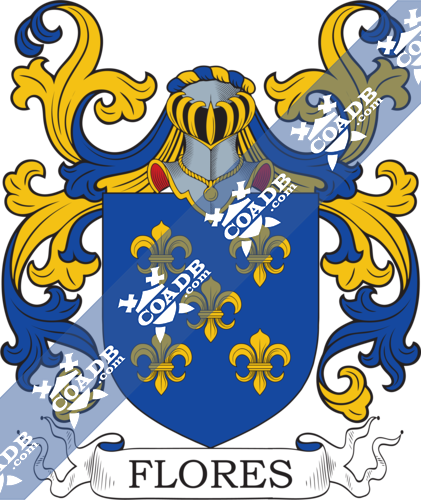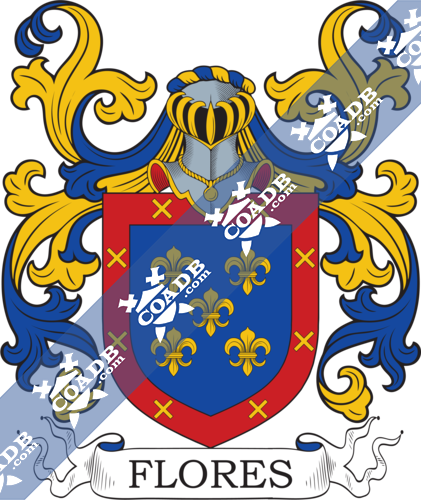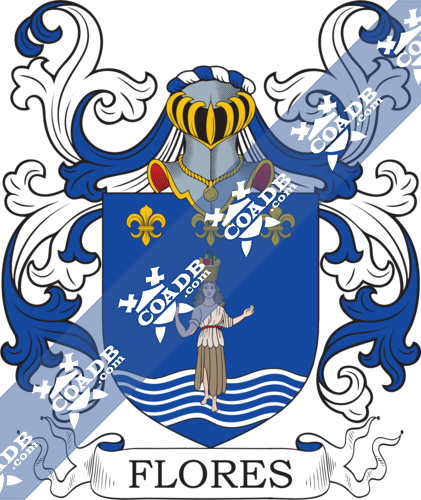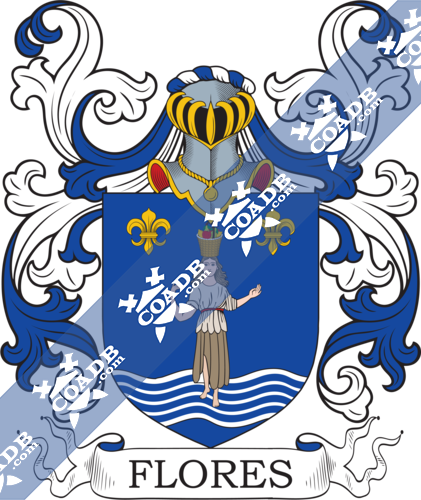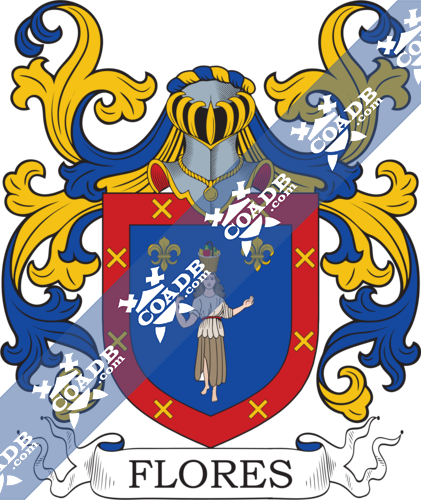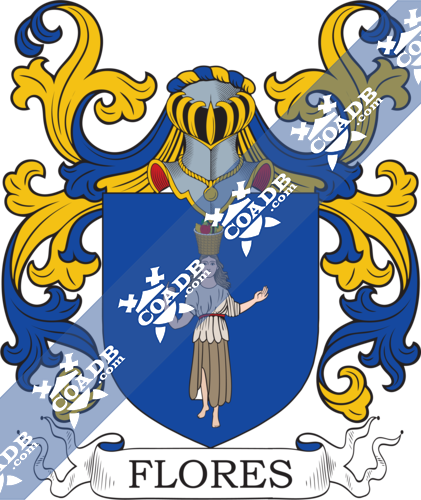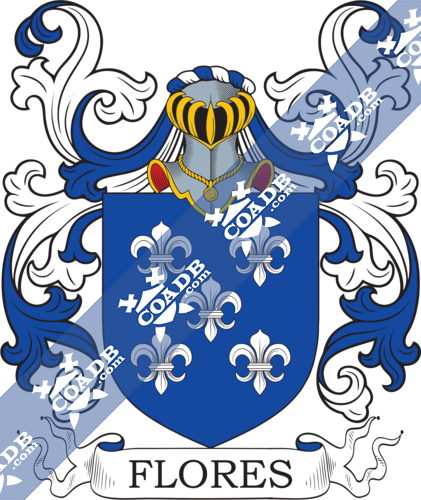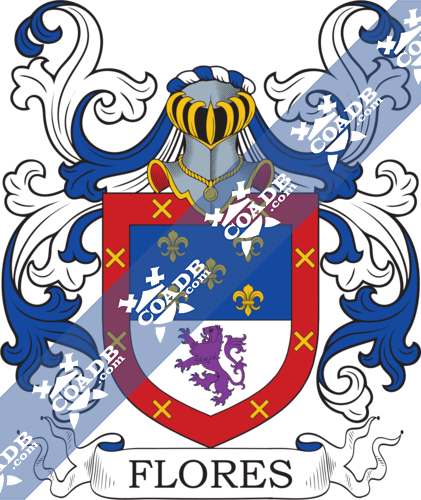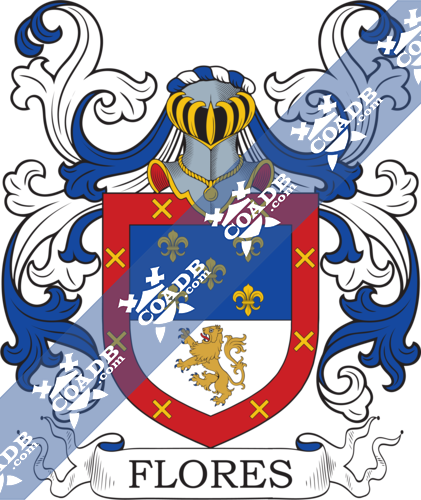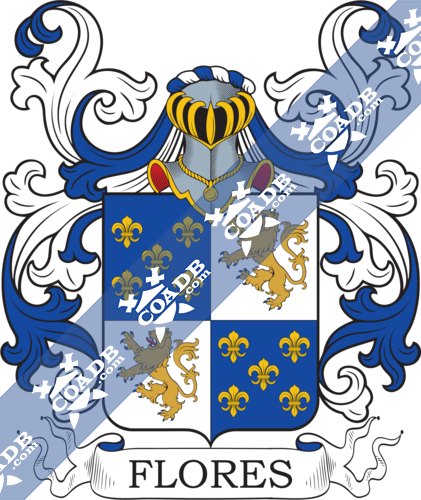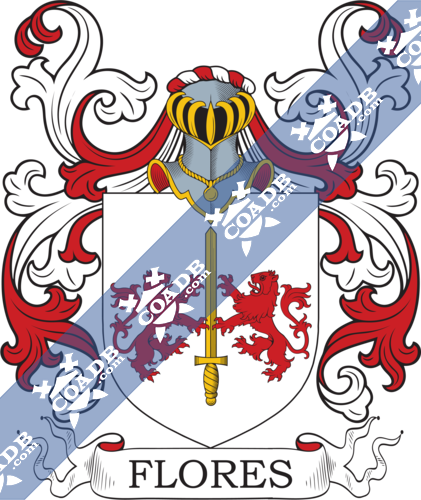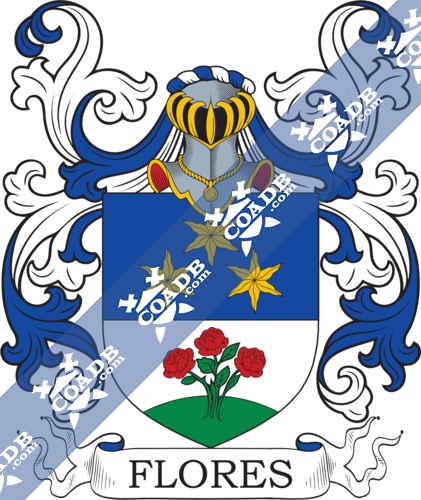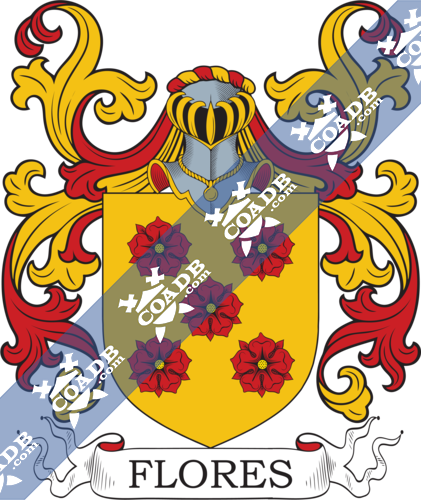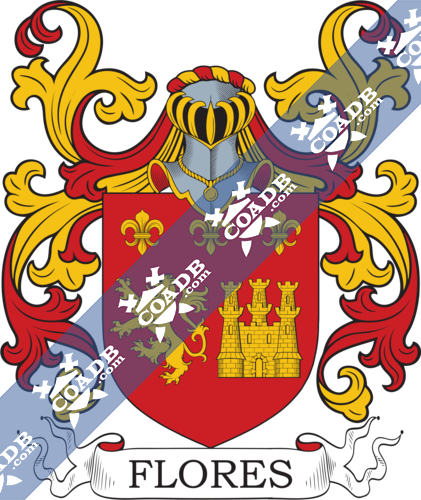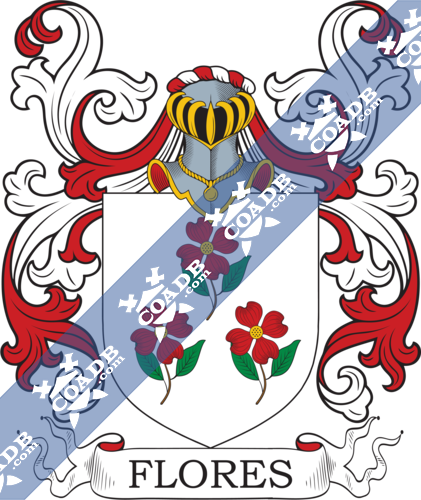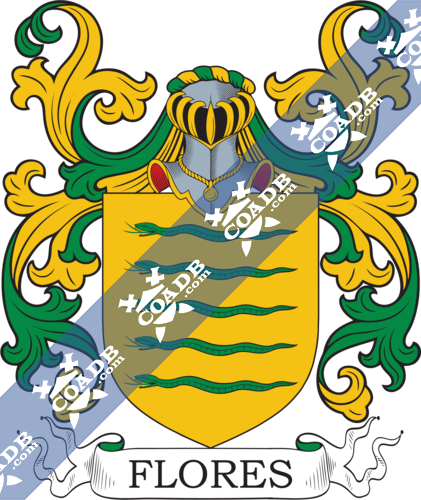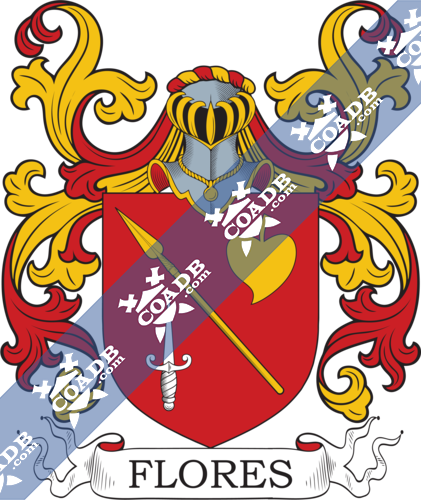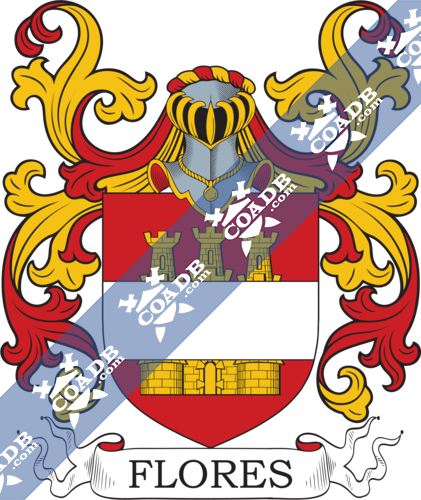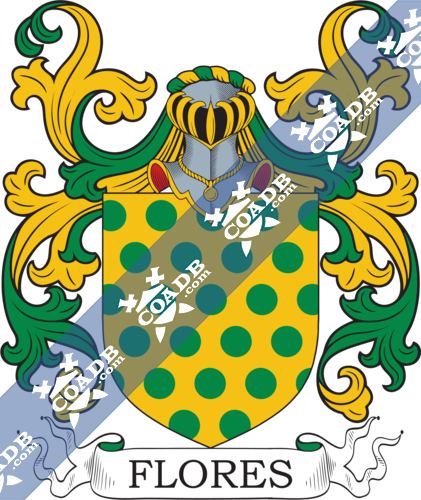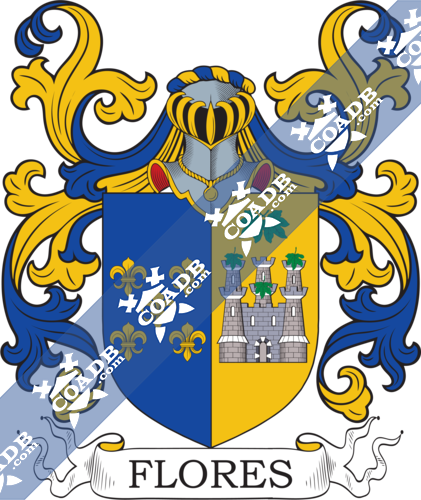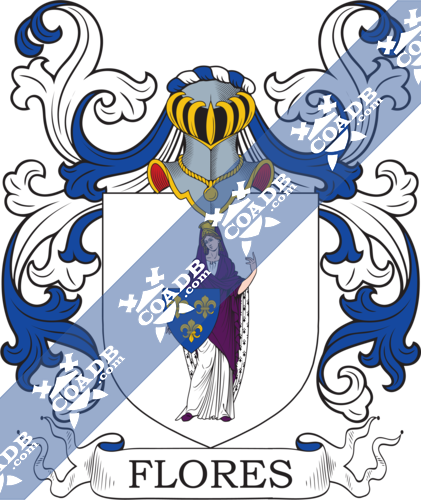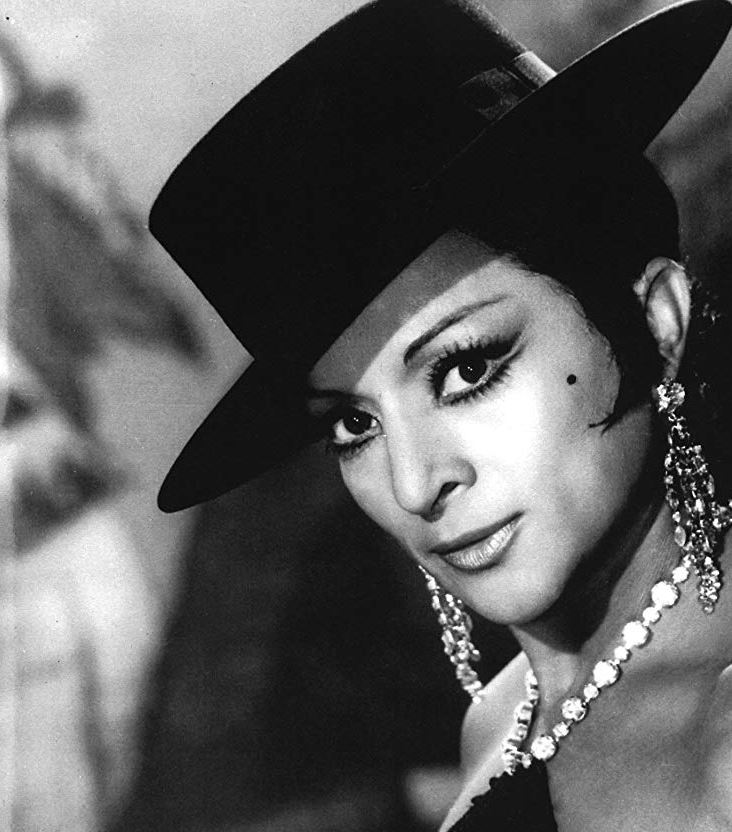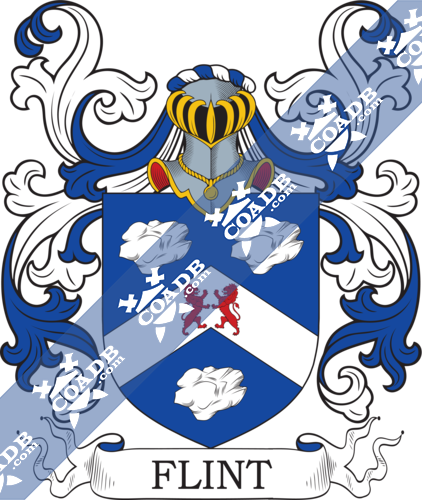Flores Family Crest, Coat of Arms and Name History
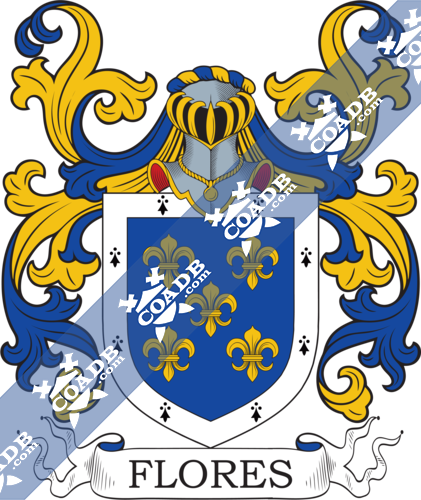
Flores Coat of Arms Gallery
Don’t know which Coat of Arms is yours?
We can do a genealogical research. Find out the exact history of your family!
Learn MoreSurname Meaning, Origin, and Etymology
There are many surnames that have their place of birth in Europe, and Flores is one that can be found among them. The use of surnames started as a way of not confusing people with the same first name, as it used to happen a lot before the creation of last names. The surname Flores count on two origins, one of them from Spain and the other from Italy, however, both roots share a common beginning. The current territory of those two countries was occupied by the Roman Empire, which had the word “florus” that can be translated as “to bloom”. In the year 410 a.d. the Romans were defeated by the Visigoths, who took over most of their territory, especially Spain where they stayed for centuries. The Visigoths had the word “froila” which means “lord or master”, it is possible that these two words, “florus” and “froila”, were taken for those two cultures during that time in that area and combined with places named Flores and Floris give birth to the surname.
Years after the Visigoth’s conquest, these were driven out the Iberian Peninsula by the invasion of the Muslims, and their court had to run away and hide in Asturias. This is where the surname Flores had a noble origin, thanks to Aznar Fruela, a bastard of King Fruela II of Asturias, from where according to many historians comes the surname. The Italian origin can be traced back to the Flores family from Naples, who during 1313 received the feudal lands of Persano and Sandionisio.
Etymologically and thanks to a variation of this surname that is Florez, this can also be a patronymic surname which means “son of Floro”, this is known thanks to the suffix “ez”, which in Spanish means “son of”. One the first records of Flores comes in a spelling variation, Don Rodrigo Froylez from Seville in 1248, who appear in the records of the Chronicle of Fernando II as a man who offered his services to this last one.
Spelling Variations
Thanks to its two sites of origins and the other regular reasons of the Medieval Europe for a surname having spelling variations such as the fact that words were written according to their sound, the mix of languages and in some cases the lack of rules for others, there were several spelling variations for one single surname, however they all referred to the same person. In the case of Flores there were the following spelling variations; Flórez, Flores, Flóriz, Flóraz, Floraz, Flor, Florán, Floran, Florián and others, in this case, it is important to remark the importance of the accent mark in Spanish, because its absence of presence can lead to two different words, that is why Flórez and Florez are considered different. In the case of the Italian root, there are others variations, because there are particular aspects of this language such as the fact that the names that come from the north of Italy ended in “o” while the names coming from the south end of “i”. So among the Italian spelling variations of Flores, there were Florio, Floro, Flori, De Florio, Florino, Flores, Florini, Florimi, Florimo, and others.
Popularity & Geographic Distribution
Flores, it is a surname that has been very widespread across the world. It is the 167th most common surname on the planet, and it is carried by approximately 2,822,107 people. It is most prevalent in Mexico and it has its highest density in Honduras. The second country with more people with the surname Flores is the United States, followed by Peru in the 3rd place. All of this information is taken from the census of 2014.
Early Bearers of the Surname
There are records about the first bearers of the surname Flores in the world, some of the most important are Sebastiano Florigerio, who was a painter around 1500 and received education in the city of Udine, Rodrigo Flores who was granted lands in the “Repartimiento de Cordoba” Juan Flores a novelist of the 15th century, Antonio Flórez, the Spanish sculptor from the 16th century, Enrique Flórez the historian of the 18th century who was also from Spain, the Viceroy of Nueva Granada and Mexico from 1784 until 1789, Manuel Antonio Flores. There were others like Gonzales Flores from Valladolid, Spain on April 2, 1674, Guiseppe Florio from Messina, Italy on July 8, 1710, Jose Miguel Flores on Mission San Buenaventura, California on December 26, 1780.
History, Genealogy, and Ancestry
There several branches of the surname Flores, because not all the users of this last names are related. One of the lines of Flores with a high detailed record is the one of the General Juan José Flores, who was President of Ecuador on several occasions, his first period was from September 22, 1830 until September 10, 1834, his second period from January 31, 1839 until January 15, 1843 and April 1, 1843- March 6, 1845. He was born in Puerto Cabello, Venezuela on June 19, 1799, and his parents were Juan José Aramburu from Spain and Rita Flores from Venezuela. Juan José Flores got married to Mercedes Jijón, who was the daughter of Antonio Jijón and Mariana Vivanco.
Juan José Flores and Mercedes Jijón had several children, the first one was Juan José Flores who was born in 1831 and got married to Ángela Icaza who also was born in 1831. They didn’t have any children. They second child of Juan José Flores and Mercedes Jijón was a daughter named Elvira Flores, who in 1844 married Eusebio Isaza in Quito, Ecuador. The son of Elvira and Eusebio was José Antonio Isaza, who was born in 1849. The third child of Juan José Flores and Mercedes Jijón was Federico Flores, of whom there are not records of any offspring.
The next son of Juan and Mercedes was Antonio Flores who was born in 1833 and also became President of Ecuador. He married Leonor Ruiz de Apodaca and their children were Leonor Flores and Elvira Flores, who became the Viscountess of Villebrune.
The fifth child of Juan José Flores and Mercedes Jijón was Timoleón Flores who was born in 1839 and became a Colonel in the army. He got married to Mercedes Chiriboga on October 26, 1882. Timoleón and Mercedes had seven children. The first one was Lucía Flores who was born in 1884, Raimundo Flores in 1886, Antonio Flores in 1888, there are not record of children of these three. The fourth child was Fanny Flores who in 1913 got married to Alfredo Fernández Salvador and their children were José María Fernández Salvador, Antonio Fernández Salvador, and Luisa Fernández Salvador. The next child of Timoleón and Mercedes was Mercedes Flores who was born in 1892 and married Arturo Zaldumbide on February of 1916. They had no children. The next son of Timoléon was also named Timoleón Flores, who was born in 1896 and got married to Beatriz Icaza and from this marriage would be born Leonardo Flores. The last child of Timoleón and Mercedes was Amalia Flores who was born in 1898 and got married to Federico di Georgis, who was a colonel in the army.
The next one in the line of Juan José Flores and Mercedes Jijón was a daughter named Amalia Flores who married Leonardo Stagg, a Colonel in the army. They only had one son, named Leonardo Stagg who got married to Francisca Caamaño in 1836. Leonardo and Francisca had two children, Leonardo Stagg and Fanny Stagg and from this branch, it would start a long line of the Stagg family.
Mercedes Flores was the next daughter of Juan José Flores and Mercedes Jijón and she got married to Antonio Fernández Salvador. From this marriage, there would be no children. The next child of Juan Flores and Mercedes Jijón was Reinaldo Flores who got married to Ana Caamaño and they had several children. The first one was Reinaldo Flores, from whom there are no records of a child. The second son was Luis Alberto Flores, who got married to Josefina Aschieri and their children were Ana Luisa Flores, Leonor Flores, and Luis Alberto Flores. The third son of Reinaldo Flores and Ana Camaaño was Juan José Flores who got married multiple times. The first one he married Aurora Palomino and they had José Gabriel Flores in 1914 and Elena Flores. The second time he married Mélida Alvarez and only had one son, José Oswaldo Flores. Finally, he got married again to Blanca Lucrecia Dolores Tobar and they had one child, Juan José Bolívar Flores. The following children of Reinaldo and Ana were Rosa Laura Flores, Ana María Flores, who got married to Miguel Garcia and then there was Alfredo Flores, there are no records of offspring of this last three children. The next daughter of Reinaldo and Ana was María Luisa Flores, who got married to Jacinto Jijón and their son was Manuel Jijón. The last child of Reinaldo and Ana was Víctor Flores, from whom there is known child.
The next child of Juan José Flores and Mercedes Jijón was Matilde Flores, who married Federico Hurtado. Matilde and Federico had 4 children, the first one was Isabel Maria Hurtado who got married to Vicente González and their children were Matilde González, Vicente González, and Isabel González. The second child of Matilde and Federico was Rosa Matilde Hurtado, she didn’t have any child. The next one was Sara Hurtado, who married Rafael Vásconez and their children were Gustavo Vásconez, Fanny Vásconez, and Sara Vásconez. The last child of Matilde and Federico was Carmen Hurtado, who didn’t have offspring.
The next daughter of the first President of Ecuador on this list, was Virginia Flores who married Pedro Pablo García and they had one son and three daughters. The son was Rodolfo García Moreno, the first daughter was Ana Luisa García Moreno who married José Luis Bernabé Raimundo Larraín. The children of Bernabé and Ana Luisa were Ana Luisa Larraín, Raimundo Pedro Larrain, who was born in 1881, María Ana Larraín, who was born in 1882, María de la Luz Larraín who was born in 1883, Paz Larraín who was born in 1885, Rodolfo Bernardo Juan Francisco Larraín who was born in 1886, Pedro Pablo Eulogio Francisco Javier Larraín, born in 1887, Juan Evangelista Jorge Isidoro de Los Sagrados Corazones Larraín, born in 1889, Virginia Larraín born in 1890, José de la Inmaculada Concepción Larraín born in 1891, María Pelagia Larraín who was born in 1893, Consuelo Larraín born in 1895, José Jaime Dionisio Larraín born in 1896 and Sergio Larraín born in 1898.
The last two children of Juan José Flores and Mercedes Jijón were two daughters Josefina Flores and Isabel Flores, both of them didn’t have children.
Early American and New World Settlers
After the Europeans started to travel to America, the surnames of the old continent arrived at the new one with them. The case of the surname Flores was no different from the rest, so many of its user landed in America across many centuries. Some of them who arrived in the 16th century were Alonso Flores, who landed in Mexico in 1539, Alejo Flores, who arrived in Colombia in 1576, and in 1595 Alvaro Alfonso Flores landed in Guatemala.
In the 17th century, the arrival of Flores continued with John Flores, who arrived in Virginia, United States in 1622 and M De La Flores who arrived in LA in 1626. The following centuries more Flores arrived, such as Franciso Flores, who landed in America in 1810, Bernardino De Flores who did the same in 1811, Maria Flores who arrived in America during 1813, Pedro De Flores also did it in the same year, and Catalina De Flores who landed on the new continent in 1814.
Mottoes
We were unable to locate any documented mottoes for the Flores family.
Grantees
We were unable to locate any documented grantees for the Flores family.
Notables
Some of the most remarkable people with the Flores surname were Lola Flores (1923-1995) a Spanish singer and actress, the Mexican artist Leopold Flores (1934-2016), Patrick Fernández Flores (1929-2017) who was the Archbishop of San Antonio, Texas from 1979 until 2004, the former President of Honduras during 1998-2002, Carlos Roberto Flores (b. 1950), Jacob Flores, an American judoka athlete, Marco Antonio Flores (1937-2013) a Guatemalan writer and poet, Tom Flores, NFL quarterback and head coach. There were also the former President of El Salvador on the period 1999-2004 Francisco Flores Pérez, Jeremy Flores a surfer from France, Marcos Abel Flores Benard (b.1985) a football player from Argentina and many others.
Blazons & Genealogy Notes
1) Royaume de – Léon – D’azur à cinq fleurs-de-lis d’or 2 1 et 2 à la bordure d’argent ch de huit mouchetures d’hermine de sable. English: Azure with five fleur de lys or 2 1 and 2 a bordure argent charged with eight ermine tails sable.
2) Nice – (Rabino di Borgomalo) – Coupé au 1 d’azur à trois étoiles mal-ordonnées d’or au 2 d’argent au rosier terrassé fûté et feuillé de sinople fleuri de trois roses de gueules. English: Per fess 1st azure three etoiles disordered [1 2] or 2nd argent a rose bush on a mount trunked and leaved vert flowered with three roses gules.
3) ou Florez – Asturies – D’argent à une femme posée de front habillée d’une robe de sinople et d’un surtout de gueules couronné d’or ch sur la poitrine d’un écusson d’azur à trois fleurs-de-lis d’or 2 et 1. English: Argent with a woman placed facing forwards in a dress vert and a coat gules crowned or charged over the stomach with an escutcheon azure three fleur de lys or 2 and 1.
4) Y Gutierrez – Estrémadure – Parti au 1 d’azur à cinq fleurs-de-lis d’or 2 1 et 2 (Flores) au 2 d’or à une tour sommée de trois tourelles du même celle du milieu plus élevée acc de cinq feuilles de figuier de sinople les tiges en haut 2 en chef posées en bande et en barre 1 brochant sur le donjon du milieu et les 2 autres brochant sur les créneaux de la tour à dextre et à senestre (Gutierrez). English: Per pale 1st azure with five fleur de lys or 2 1 and 2 ( flory ) 2nd or with a tower surmounted by three turrets of the same that of the middle the highest accompanied by five fig leaves vert the stems upwards 2 in chief placed bendwise and bendwise sinister 1 covering over the turret of the middle and the 2 others covering over the merlons of the tower to the dexter and to the sinister.
5) En campo de plata, una Princesa con manto de púrpura y armiños y coronada de oro, sosteniendo con las manos en el pecho un escusón de azur, con tres flores de lis de oro, puestas en triángulo. English: Ar, a Princess with mantle purpure and ermine, crowned or, holding with her hands an escutcheon az.charged with three fleur de lis, arranged in triangle.
6) Tirso de Avilés señala que el campo del anterior escudo es de azur. English: Az, a Princess with mantle purpure and ermine, crowned or, holding with her hands an escutcheon az.charged with three fleur de lis, arranged in triangle.
7) En campo de azur, cinco flores de liEse blasón primitivo de los Flórez lo sustituyeron después varias casas leonesas con este otro: En campo de azur, cinco flores de lis, de oro, puestas en sotuer.s, de oro, puestas en sotuer. English: Az, five fleur de lis or, saltirewise.
8) Algunos Flórez, también de León, acrecentaron dichas últimas armas con una bordura de gules, con ocho sotueres de oro. English: Az, five fleur de lis or, saltirewise, within bordure gu., charged with eight saltires of the second.
9) En el Palacio de Carballo, de Cangas del Narcea (Asturias), constaban: En campo de azur, una doncella que vadea un río de plata y azur, sosteniendo sobre su cabeza una cesta llena de frutas. En jefe, tres flores de lis, de oro, en una faja. English: Az, a maiden wading a river ar.and az., holding on her head a basket full of fruits, in chief three fleur de lis or.
10) En Besullo, del concejo de Cangas del Narcea, usaban las anteriores armas pero con dos flores de lis solamente. English: Az, a maiden wading a river ar.and az., holding on her head a basket full of fruits, in chief two fleur de lis or.
11) En la casa de los Queipo-Flórez, en Ambas-aguas, del concejo de Cangas del Narcea, constan las mismas que en Besullo, pero con bordura de gules con ocho aspas de oro, y sin río. English: as preceding, within bordure gu., charged with eight saltires or.
12) En Murias de Paronchi (Asturias), casa de una rama de los Flórez, traía la doncella con el cesto de las frutas, sin río. English: Az, a maiden carring basket full of fruits on her head.
13) Otros: En campo de azur, cinco flores de lis, de plata, puestas en sotuer. English: Az, five fleur de lis ar.
14) También se hizo frecuente entre los antiguos Flórez, de León, el uso de estas armas: Escudo cortado: la partición alta de azur, con las cinco flores de lis de oro, puestas en sotuer, y la partición baja de plata, con un león rampante de púrpura,, armado de azur. Bordura general de gules, con ocho sotueres de oro. English: Per fesse, in chief az., five fleur de lis or, in base ar a lion rampant purp. armed az. All within bordure gu., charged with eight saltires of the second.
15) Otros de los antiguos Flórez, de León, el uso de estas armas: Escudo cortado: la partición alta de azur, con las cinco flores de lis de oro, puestas en sotuer, y la partición baja de plata, con un león rampante de su color natural, armado de azur. Bordura general de gules, con ocho sotueres de oro. English: Per fesse, in chief az., five fleur de lis or, in base ar a lion rampant ppr. armed az. All within bordure gu., charged with eight saltires of the second.
16) Y de estas otras, cuarteladas en cruz: 1º y 4º, de azur, con las cinco flores de lis de oro, puestas en sotuer, y 2º y 3º, de plata, con el león rampante de púrpura, armado de azur. English: Quaterly, 1st and 4th, az, a five fleur de lis or, 2nd and 3rd, ar, a lion rampant purp., armed az.
17) Y de estas otras, cuarteladas en cruz: 1º y 4º, de azur, con las cinco flores de lis de oro, puestas en sotuer, y 2º y 3º, de plata, con el león rampante de su color natural, armado de azur. English: Quaterly, 1st and 4th, az, a five fleur de lis or, 2nd and 3rd, ar, a lion rampant ppr., armed az.
18) Los Flórez, originarios de Manzaneda de Torio (León), radicados en México y Estados Unidos, según Vicente de Cadenas, traen: En campo de plata, dos leones, de gules, afrontados y sosteniendo en sus manos una espada, de oro. English: Ar, two lions gu., combatant holding in their paws a sword or.
19) Los Flores, originarios de Burgos, según Vicente de Cadenas, usan: En campo de azur, un sol, de oro. English: Az, a sun or.
20) Los Flores, radicados en Santander y extendidos a San Sebastián, Pamplona y Barcelona, según Vicente de Cadenas, traen: En campo de oro, cinco rosas, de gules, botonadas de oro, y puestas en aspa. English: Or, five roses gu, seeded or. And put on a edge(?)
21) Los Flores, de Baños, según Vicente de Cadenas, usan: En campo de gules, un león y un castillo, de oro, puestos en faja, surmontados de tres flores de lis. English: Gu, a laion and castle or in fesse, surmounted by three fleur de lis.
22) Los Flórez, de Castilla, según Vicente de Cadenas, traen: En campo de oro, tres panelas de gules y tres calderas de sable. Bordura de gules, con seis aspas de oro. English: Or, three leaves of Tilia gu.and three caulderons sa., within bordure gu., charged with eight saltires or
23) Los Flórez, de León, según Vicente de Cadenas, usan: En campo de oro, tres flores al natural, mal ordenadas. English: Or, three flowers ppr, badly ordered (1,2)
24) Algunos traen el campo del anterior escudo de plata English: as preceding, shield ar.
25) Los originarios de Campludo, según Vicente de Cadenas, traen: En campo de oro, cinco sierpes, de sinople, puestas en palo. English: Or, five serpents vert, in pale.
26) Los Flórez, de Perú, según Vicente de Cadenas, traen: En campo de gules, una lanza, de oro, puesta en banda, acompañada en lo alto de una panela, de oro, y en lo bajo de una daga, de plata. English: Gu., a lance or bedwise, accompanied in chief by leaf of Tilia and in base by dagger ar.
27) Otros Flores: En campo de gules, un castillo, de oro, resaltado de una faja, de plata. English: Gu., a castle or, surmounted by fesse ar.
28) Los Flores, de León, según Vicente de Cadenas, usan: En oro, moteado de sinople English: Or, spotted vert.

